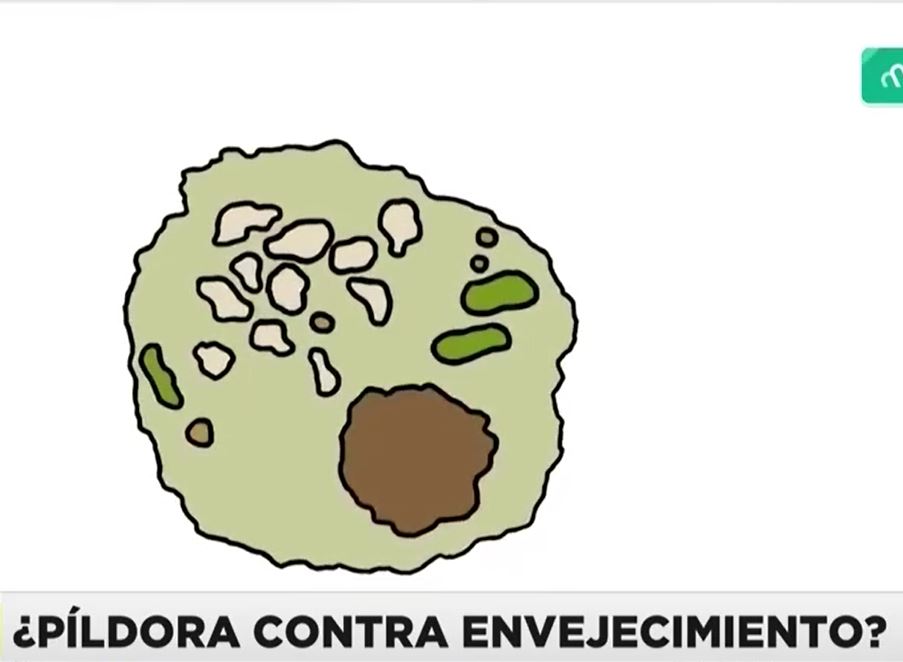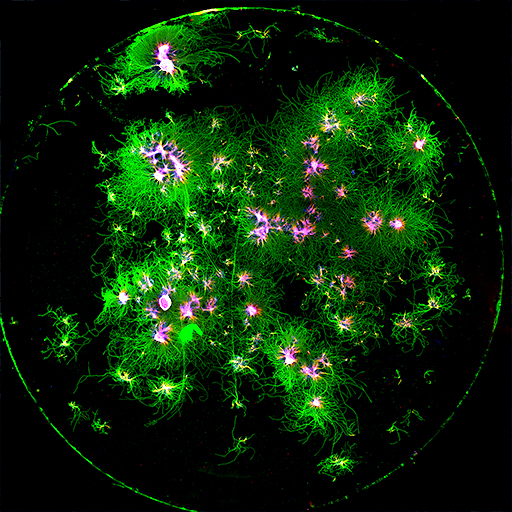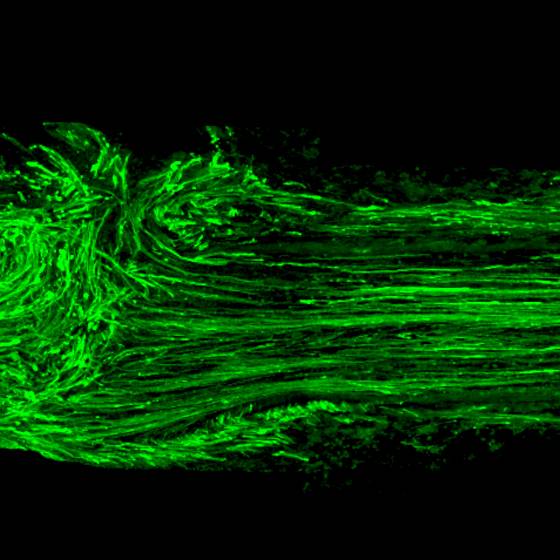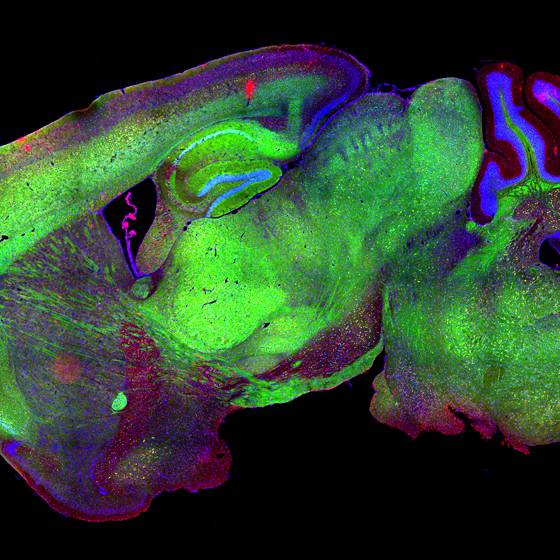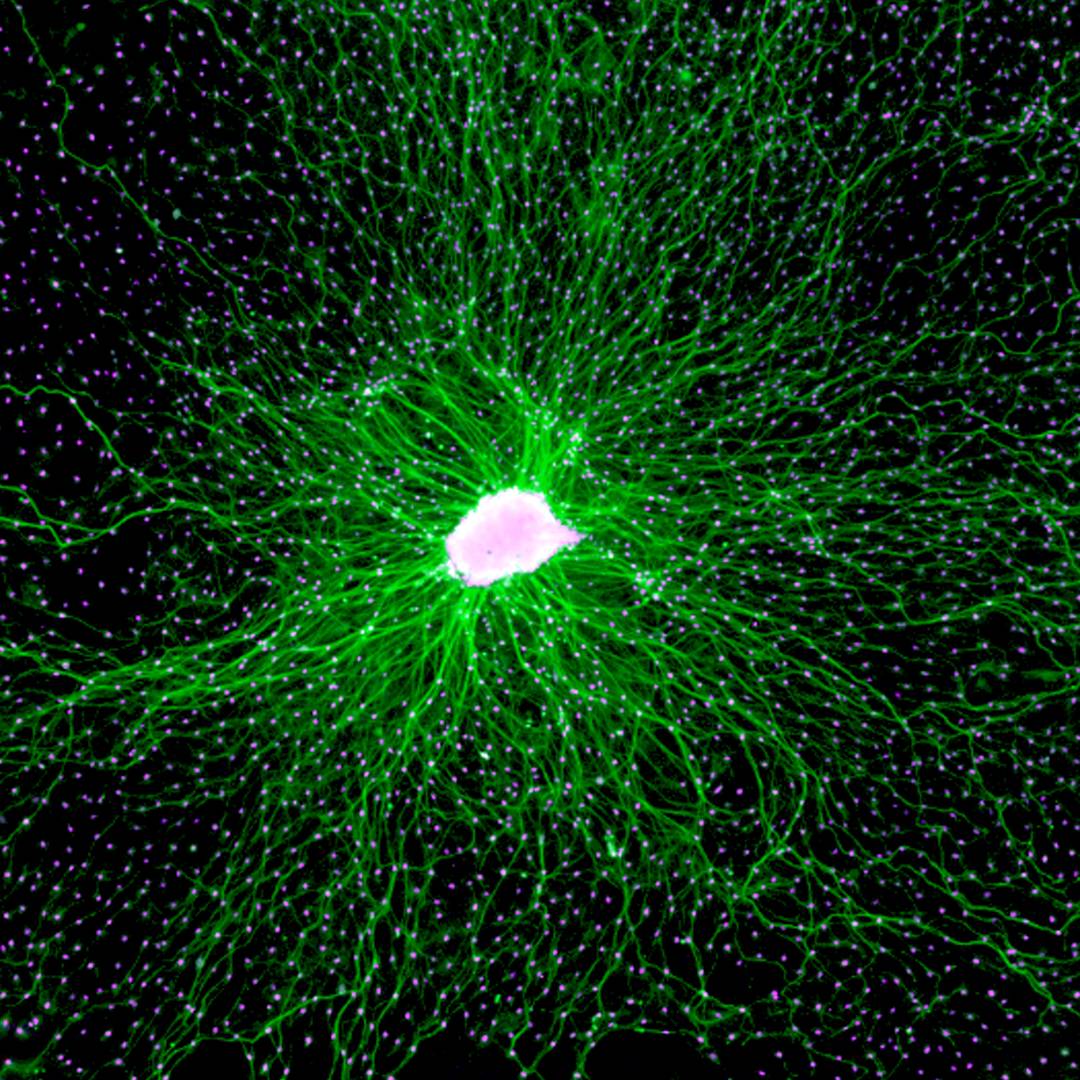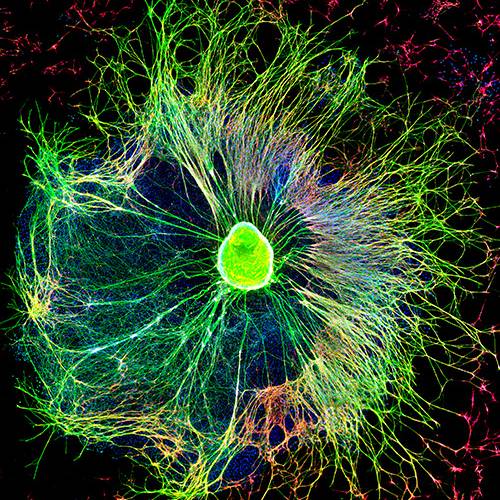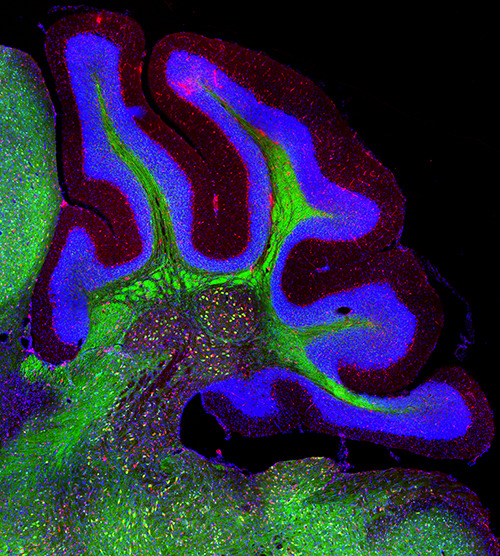Schwann cell regulation of axonal regeneration
In the mammalian nervous system, the regenerative capabilities of neurons show regional variability. In the peripheral nervous system (PNS), axons efficiently regenerate after nerve damage associated to the pro-regenerative effect of Schwann cells. In contrast, in the central nervous system the regenerative capability is poor due to both neuronal intrinsic limitations and glial responses that restrict regeneration. Although, axonal regeneration in the periphery show good regenerative capacity in preclinical models, it still represents a clinical problem associated to delayed repair of peripheral nerves, and the negative effects of aging and other conditions, including diabetes, for axonal regeneration and functional recovery. In the lab, we study how Schwann cells reprogramming regulates axonal regeneration after nerve damage, in order to manipulate this response to enhance axonal regeneration.
Longitudinal section of a sciatic nerve, with regenerating axons crossing a surgically repaired region, axons are labelled using an antibody against the protein SCG10.

Schwann cell exosomes enhance axonal regeneration
In the peripheral nervous system, regeneration of injured axons depends on the reprogramming of Schwann cell from a differentiated phenotype into a phenotype known as repair Schwann cells. Our lab was the first to demonstrate that Schwann cell exosomes enhanced axonal regeneration in vitro and in vivo in laboratory animals, an effect we later showed was dependent on the reprogramming of Schwann cells into a repair phenotype, and associated with the loading of specific miRNA into exosomes and their transfer to axons. In addition, we are exploring the effects of aging, chronic denervation and diabetes in Schwann cell reprograming and axonal regeneration, in order to develop interventions to enhance axonal regeneration in these conditions.
People involved

Daniela Rebolledo
Senior Research Assistant

I am a Biochemist from Pontificia Universidad Católica de Chile (PUC) and PhD in Cell and Molecular Biology from the same university. My PhD thesis research was performed at the Physiology and Biophysics department, University of Washington. My research has focused on the physiology of the neuromuscular system and the pathological mechanisms behind neuromuscular disorders of diverse etiology.

Karina Girardi do Carmo
Postdoctoral fellow

Biologist, Ph.D., and MSc in Cell and Molecular Biology from Oswaldo Cruz Foundation (Fiocruz/RJ). Studying age-dependent decline of regenerative capacity in the peripheral nervous system. Mainly focusing on the contribution of metabolic profile of aging Schwann cells in senescence and particularly exploring the epithelial-mesenchymal transition (EMT) like process.

Renata Gallardo
Research Assistant

I studied Medical Technology at the Universidad Mayor acquiring knowledge in histological techniques, immunohistochemistry and immunofluorescence. I am interested in learning more from the world of neurosciences and related pathologies to find new treatments to improve the quality of life in aging.
Related Publications
octubre 5, 2021
IRE1α governs cytoskeleton remodelling and cell migration through a direct interaction with filamin A.
Urra H, Henriquez DR, Cánovas J, Villarroel-Campos D, Carreras-Sureda A, Pulgar E, Molina E, Hazari YM, Limia CM, Alvarez-Rojas S, Figueroa R, Vidal RL, Rodriguez DA, Rivera CA, Court FA, Couve A, Qi L, Chevet E, Akai R, Iwawaki T, Concha ML, Glavic Á, Gonzalez-Billault C, Hetz C.
Nat Cell Biol. 2018 Aug;20(8):942-953. doi: 10.1038/s41556-018-0141-0. Epub 2018 Jul 16.
PMID: 30013108
octubre 5, 2021
Herpes Simplex Virus Type 1 Neuronal Infection Perturbs Golgi Apparatus Integrity through Activation of Src Tyrosine Kinase and Dyn-2 GTPase.
Martin C, Leyton L, Hott M, Arancibia Y, Spichiger C, McNiven MA, Court FA, Concha MI, Burgos PV, Otth C
Front Cell Infect Microbiol. 2017 Aug 22;7:371. doi: 10.3389/fcimb.2017.00371. eCollection 2017.
PMID: 28879169
octubre 5, 2021
Resistance of leukemia cells to cytarabine chemotherapy is mediated by bone marrow stroma, involves cell-surface equilibrative nucleoside transporter-1 removal and correlates with patient outcome.
Macanas-Pirard P, Broekhuizen R, González A, Oyanadel C, Ernst D, García P, Montecinos VP, Court F, Ocqueteau M, Ramirez P, Nervi B.
Oncotarget. 2017 Apr 4;8(14):23073-23086. doi: 10.18632/oncotarget.14981.
PMID: 28160570
octubre 5, 2021
BAX inhibitor-1 regulates autophagy by controlling the IRE1α branch of the unfolded protein response.
Castillo K, Rojas-Rivera D, Lisbona F, Caballero B, Nassif M, Court FA, Schuck S, Ibar C, Walter P, Sierralta J, Glavic A, Hetz C.
EMBO J. 2017 Jun 1;36(11):1640. doi: 10.15252/embj.201797020.
PMID: 28572284
Related News
Investigador U. Mayor asume la dirección del Centro de Gerociencia, Salud Mental y Metabolismo, GERO
octubre 11, 2023
El Dr. Felipe Court, quien también es director del Centro de Biología Integrativa UM, liderará esta iniciativa del Fondo de Áreas Prioritarias de Chile dedicado al estudio del envejecimiento, que…
Científicos de Harvard trabajan en una píldora contra el envejecimiento
septiembre 5, 2023
El genetista David Sinclair y su equipo realizaron pruebas y lograron tener un control preciso de la edad biológica de un animal complejo. “Lo que se demuestra es que este proceso se podría tratar…

